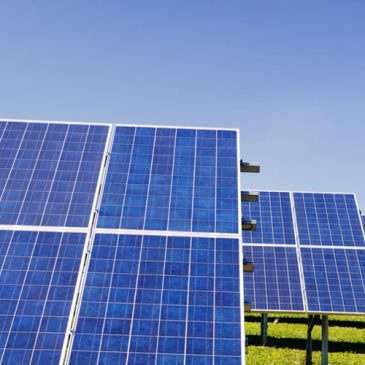Global Warming Is Real – Can Solar Power Help Out?
With outspoken voices like that of student climate activist Greta Thunberg and former presidential candidate Jay Inslee taking center stage in the media these days, more and more evidence of the harmful environmental effects of fossil fuels is coming to light. The importance of renewable energy sources like solar has never been higher, but so many factors play into our ability to implement it.
Renewable vs. Non-Renewable Energy
Since fossil fuels like gas, oil, and coal take so long to form underground, and since we mine for them at such a rapid rate, they’re considered a non-renewable energy source. This means we’ll keep having to find new places to dig for these materials, thereby destroying even more of our environment. Burning these fuels also creates holes in the ozone layer, causing an excess of carbon dioxide to seep into our air.
By contrast, the sun consistently provides 173,000 terawatts of solar energy to the entire Earth – more than 10,000 times the amount of energy we need to power the world. It’s not just renewable – it’s overabundant! Installation of solar panels also causes little to no environmental damage and can be incredibly cost-effective.
But at What Cost?
Yes, the development of solar technology costs money, and so does installing commercial and residential solar panels. However, so does buying the right to mine and import fossil fuels from other nations – not to mention the environmental cost. Because solar is so naturally abundant, it can be accessed from anywhere – all that’s needed is the technology to harness it, which is improving every day.
The solar industry has also created hundreds of thousands of jobs – 51,000 in 2016 alone – which helps to stimulate the larger economy. That’s 1 in every 50 jobs created!
Change Happens Over Time
Like any major resource change, solar overtaking fossil fuels won’t happen in a day. Especially given the complicated politics woven into the fossil fuel industry – especially in the US – it won’t be an easy transition.
But solar is already growing so quickly – nearly 40% of new energy sources installed in 2016 were solar – and the amount of energy able to be stored and used is steadily climbing.
What You Can Do
Though installing your own solar panels can incur some costs, you can actually get great tax credits to offset these costs, and you can participate in net metering to sell your leftover energy to paying users.
Calling your local representatives to encourage larger tax breaks as incentives for you and your neighbors to install panels is also a great idea, as is asking them to lobby for better environmental policies through increased renewable energy development overall.
You can even get a solar-powered charger for your phone. The possibilities are limitless, and every single person can make an impact!

